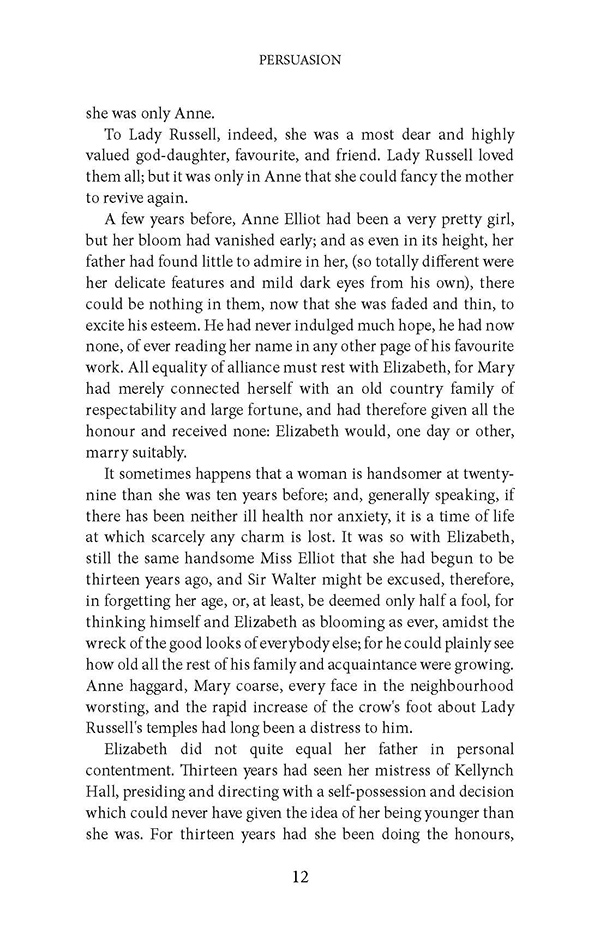


In setting up a face off between those who inherited their social status (the aristocracy) and those who worked for it (naval officers), Persuasion examines the pros and cons of the way power is distributed in society – and how that distribution is changing.

Persuasion asks: are endings ever really endings? When is it worthwhile holding on to the past, and when should you let it go and move on to the next thing? And the novel asks that question on a much larger scale than just Anne's romantic prospects. Anne lives on her memories of summer, but feels that only winter lies ahead. At 27 she’s the oldest of Austen’s heroines and, unlike the others, she’s already had, and lost, her chance at love. Anne is unmarried, having rejected her lover, a naval officer, after being persuaded by her friends and family that he was unsuitable.

Persuasion's protagonist is an aristocratic woman named Anne Eliot. While Northanger Abbey is a lighthearted send-up of Gothic novel clichés, the term scholars most often use to describe Persuasion is “autumnal” – the kind of feeling you get when there’s a chill in the air and dead leaves falling from the trees. Publishing the two novels together does make sense as more than a marketing gimmick (two Austen novels for the price of one!) – both are set partly in Bath, both feature bookish heroines, and both have troublesome father figures.īut there are also major differences between the two books. It’s also shorter than most of her other novels, and some critics think that, because she wrote the novel while she was sick with the disease that would eventually kill her, she didn’t expand and polish Persuasion as much as she would have if she had been in good health.īecause of Persuasion’s shorter length, it was published as a package with another novel that Austen hadn’t published during her lifetime – her first completed novel, Northanger Abbey. Persuasion was the last novel Jane Austen completed, and it didn’t appear in print until 1818, after she had passed away.


 0 kommentar(er)
0 kommentar(er)
